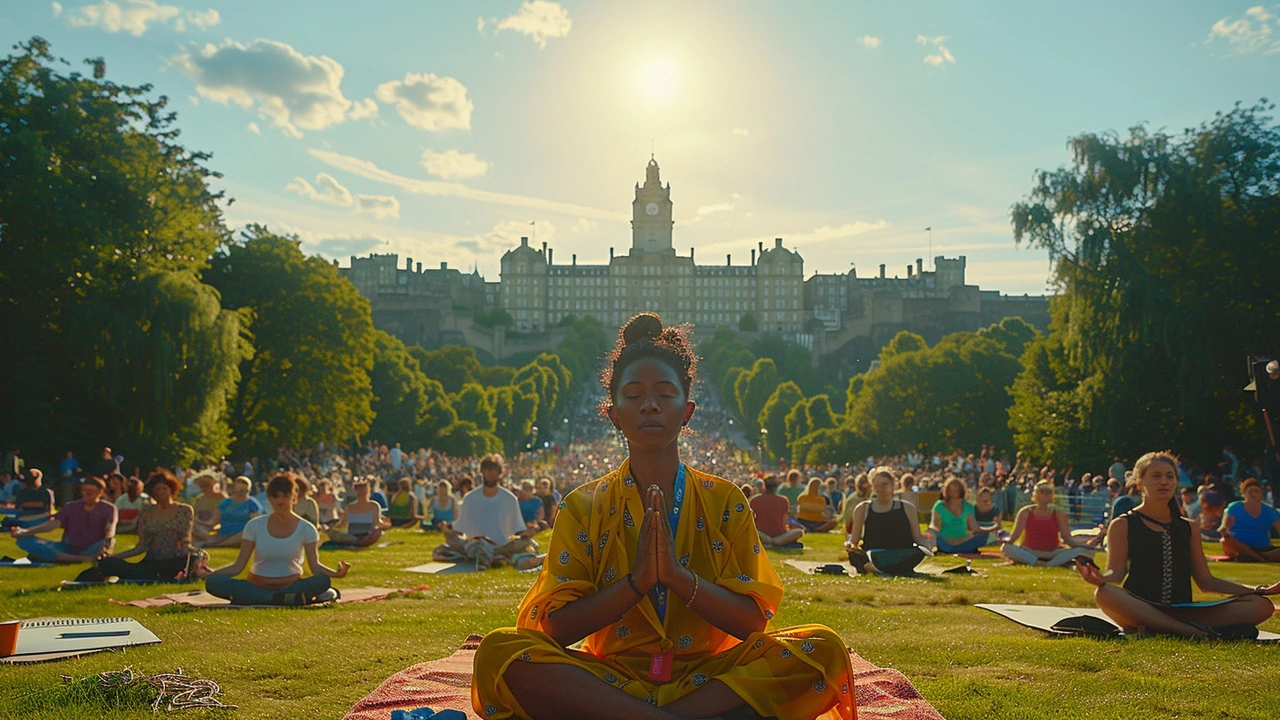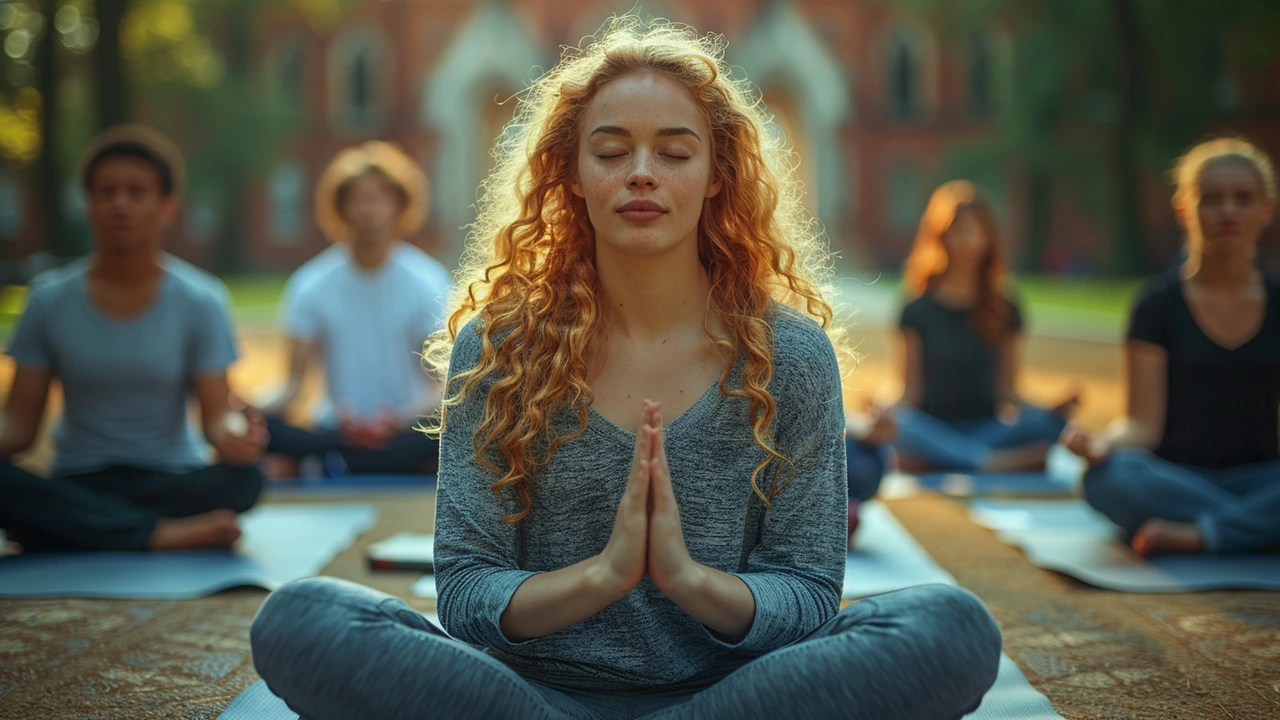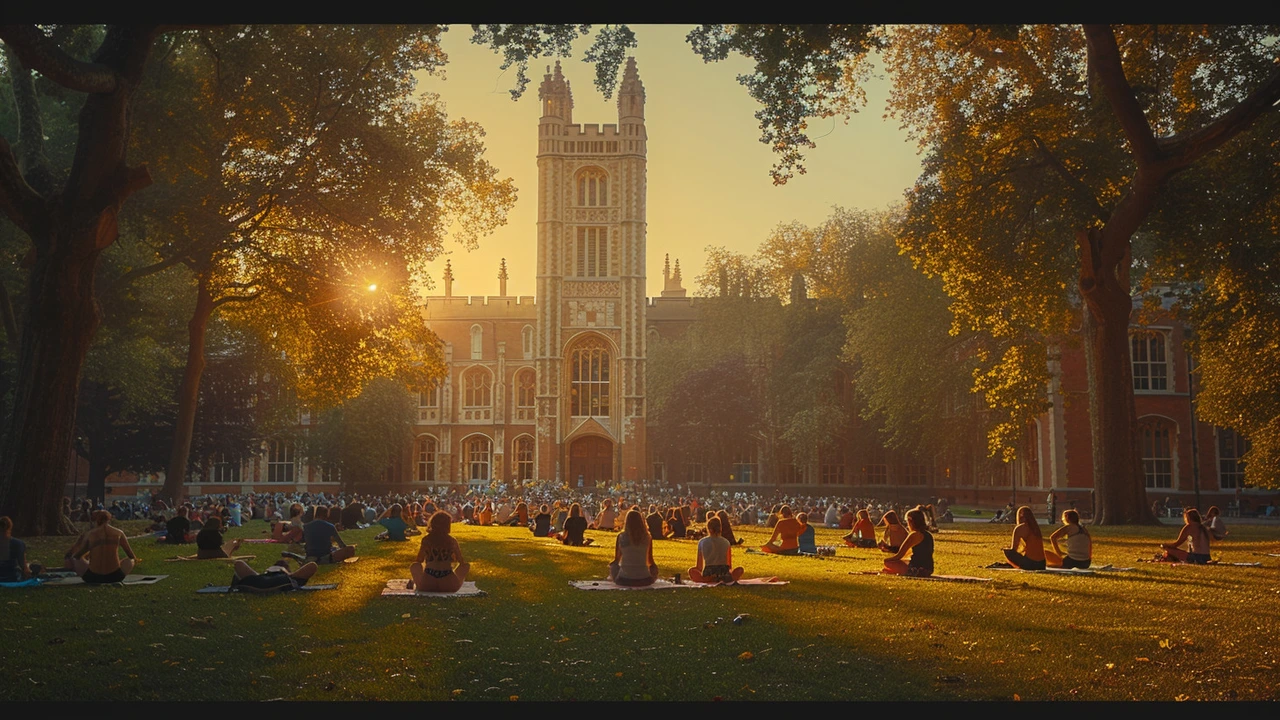It's no secret that meditation holds many benefits for mental health and well-being. But did you know it can also boost creativity and innovation? By calming the chatter in your mind, you can unlock a richer, deeper well of creative potential.
Meditation helps you to center yourself and clear mental blocks that often hinder innovative thinking. Through focused breathing and mindfulness exercises, you can train your mind to move past conventional thought patterns. This practice opens the door to novel ideas and unique solutions.
This article will delve into how meditation can enhance creativity and provide practical tips for incorporating meditation into your daily routine. We'll look at some scientific evidence and share success stories of individuals who have harnessed the power of meditation to fuel their creative endeavors.
- Understanding Meditation
- The Science Behind Meditation and Creativity
- Tips for Incorporating Meditation in Daily Life
- Success Stories
- Practical Meditation Techniques
Understanding Meditation
Meditation is an ancient practice that has been around for thousands of years, with its roots tracing back to India around 1500 BCE. At its core, meditation is about relaxing the mind and body, promoting inner peace and self-awareness. Despite its long history, it has recently gained widespread popularity in the Western world due to its numerous benefits.
Meditation can take many forms, including mindfulness meditation, guided meditation, and transcendental meditation. Each type has its unique techniques and focuses, but they all aim to achieve a similar state of mental clarity and calmness. Mindfulness meditation, perhaps the most well-known, involves focusing on the present moment and observing thoughts without judgment.
"Meditation is not about stopping thoughts, but recognizing that we are more than our thoughts." - Arianna Huffington
Understanding the different types of meditation is essential to finding the one that suits you best. For example, guided meditation involves listening to a guide or instructor who helps you visualize calming scenarios, while transcendental meditation uses a specific mantra repeated silently to aid concentration. The choice depends on personal preference and what you seek to achieve through the practice.
The benefits of meditation extend beyond relaxation. Scientific studies have shown that regular meditation can reduce stress, improve emotional health, enhance self-awareness, and lengthen attention span. These effects are not just anecdotal. A study published in the journal Psychiatry Research found that participants who engaged in an eight-week mindfulness meditation program experienced changes in brain regions associated with memory, empathy, and stress.
Moreover, meditation promotes a state of restful alertness. This state can lead to increased creativity, as it allows the mind to wander and explore new ideas without the constraints of stress and anxiety. When you meditate, you tap into a mode of thinking that opens up possibilities and divergent thinking. Divergent thinking is crucial for creativity as it involves generating multiple, unique solutions to a problem.
Incorporating meditation into your life doesn't require long hours of practice. Even short sessions, as little as 10 minutes a day, can have a profound impact. The key is consistency. Making meditation a regular part of your routine helps build the habit and integrate its benefits into your daily life.
To start meditating, find a quiet place where you won't be disturbed. Sit or lie down in a comfortable position. Close your eyes and focus on your breathing. Feel the breath entering and leaving your body. When your mind wanders, gently bring your focus back to your breath. This simple practice can be the first step toward a more centered, creative, and innovative you.
The Science Behind Meditation and Creativity
The connection between meditation and creativity is more than just anecdotal; it's backed by science. In recent years, numerous studies have explored how mindfulness and meditation practices can significantly increase creative thinking. One of the key areas where meditation impacts creativity is by enhancing divergent thinking. Divergent thinking is a thought process used to generate creative ideas by exploring many possible solutions. When you meditate, you calm your mind, making it easier to think outside the box.
One interesting study published in the journal Frontiers in Psychology showed that participants who practiced open-monitoring meditation, which involves being open to all thoughts and sensations without focusing on one in particular, experienced a boost in both divergent and convergent thinking. Convergent thinking, on the other hand, is the process of finding a single, correct solution to a problem. Both are crucial for creativity, and meditation helps improve them simultaneously.
Regular meditation also impacts the brain's default mode network (DMN). The DMN is a network of interacting brain regions that are active when a person is not focused on the outside world, like when daydreaming or mind-wandering. Meditation has been shown to reduce activity in the DMN, which can result in fewer distractions and a reduction in stress and anxiety. Lower stress levels allow for a freer flow of ideas, enhancing creative thinking. As creativity often requires periods of intense focus and times of spontaneous thought, meditation seems particularly well-suited to foster both states.
The Role of Neuroplasticity
One of the fascinating aspects of meditation is its effect on neuroplasticity—the brain's ability to reorganize itself by forming new neural connections. Research from Harvard Medical School has demonstrated that consistent meditation practice can increase the grey matter in the brain's prefrontal cortex, the area responsible for decision-making, emotional regulation, and problem-solving. This increased grey matter can improve cognitive functions that are critical for creative thinking and innovation.
Another interesting finding comes from research on the alpha brain waves. Alpha waves are associated with relaxed, yet focused mental states, making them critical for the eureka moments of creativity. Studies show that meditation can increase the presence of these alpha waves, helping to foster a mental environment conducive to creative insights.
Dr. Amishi Jha, a neuroscientist at the University of Miami, notes, "Meditation doesn't just help with managing stress; it changes the operating system of the brain. This reconfiguration can open new pathways for creativity and innovation."
Moreover, a study conducted by the Leiden University in the Netherlands found that mindfulness meditation could improve both flexibility—an important element of creative thinking—and insight problem-solving. Participants who engaged in mindfulness meditation performed better on tasks requiring flexible thinking and generated more original ideas.
For those skeptical about meditation's impact on creativity, the mounting scientific evidence provides a compelling case. By fostering an environment where the mind can wander freely without distraction, meditation creates fertile ground for fresh, innovative ideas to take root. So, if you're seeking to enhance your creative abilities, incorporating a simple mindfulness routine into your life could be an incredibly effective strategy.

Tips for Incorporating Meditation in Daily Life
Starting a meditation practice might feel challenging at first, but it’s a journey worth embarking on. Consistency is key to making it a natural part of your day. One effective way to begin is by setting aside a specific time each day for meditation. Choose a time when you’re least likely to be interrupted, ensuring that meditation becomes a sacred, uninterrupted part of your routine. Many people find the early morning best, as it sets a calm tone for the entire day.
Finding a quiet, comfortable space is another crucial step. Your environment should be free from excessive noise and disturbances, allowing you to relax fully. Some prefer dim lighting or a dedicated corner filled with calming objects like candles or plants. Creating such a space signals to your mind that it’s time to unwind and enter a state of mindfulness.
Guided meditations can be particularly helpful for beginners. There are numerous apps and online resources that offer free guided sessions, catering to various needs—from stress reduction to boosting creativity. These resources often provide structured programs, making it easier to stay committed. Consistency is key to eventually experiencing the cognitive and creative benefits of meditation. As Dr. Jon Kabat-Zinn, a renowned mindfulness expert, said,
“You can’t stop the waves, but you can learn to surf.”
Starting small is important. Attempting to meditate for long periods right away can be overwhelming. Begin with just five to ten minutes a day and gradually increase the duration as you become more comfortable. Remember, it’s not about the length of time but the quality of your practice. It’s better to have a short, focused session than a longer one where your mind keeps wandering.
Incorporating mindfulness in everyday tasks can also be a useful entry point. Simple acts like mindful breathing, paying full attention to your senses while eating, or being fully present during a walk can serve as mini meditation sessions. This approach demystifies meditation, showing that it's less about sitting in silence and more about fostering a mindful attitude throughout your day.
Journaling before or after meditation can help deepen your practice. Writing down your thoughts, feelings, and experiences can provide insight into your mental state and track your progress. It also helps in identifying patterns or areas of resistance, aiding in personal growth. Keeping a journal often turns meditation into a reflective and creative exercise.
Practicing gratitude can synergize well with meditation. At the end of your session, spend a few minutes reflecting on things you’re grateful for. This habit cultivates a positive mindset, enhancing your overall well-being and reinforcing the benefits of meditation. Many people find that starting or ending their meditation with gratitude makes them feel more connected and content.
Finally, refrain from being too hard on yourself. It's natural for your mind to wander or struggle with maintaining focus, especially in the beginning. Treat each session as an opportunity to learn and grow, rather than a task to be perfected. With patience and persistence, meditation will become a cherished part of your daily life.
Success Stories
There are numerous success stories of individuals and companies that have harnessed the power of meditation to boost creativity and innovation. Take the example of Steve Jobs, co-founder of Apple Inc., who was an avid practitioner of meditation. Jobs often credited his meditation practices for his ability to think outside the box and come up with groundbreaking products. His biographer, Walter Isaacson, noted that Jobs's meditative practices played a significant role in his ability to stay focused and inventive.
Other successful companies, like Google, have also adopted meditation as a staple within their corporate culture. At Google, meditation and mindfulness sessions are part of an initiative called “Search Inside Yourself.” This program has helped employees reduce stress while simultaneously sparking creativity and fostering innovation. The success of such initiatives within Google showcases how meditation can be a powerful tool in the corporate world.
In the world of entertainment, Katy Perry is another example of a high-profile individual who uses meditation to enhance her creativity. She has spoken openly about her daily meditation routine and how it helps her stay centered and fuel her artistic endeavors. Perry claims that meditation allows her to tap into a deeper well of creativity that greatly enhances her songwriting and performances.
Another notable figure who benefits from meditation is Ray Dalio, the founder of Bridgewater Associates. Dalio credits meditation for his success in navigating the cutthroat world of finance. According to Dalio, meditation facilitates clear thinking and decision-making, which are crucial in his field. He even encourages his employees to practice meditation to improve their work performance and overall well-being.
Other creative fields are also seeing the benefits of meditation. Writers like Elizabeth Gilbert, known for her book “Eat, Pray, Love,” have attributed their creative processes to meditation practice. Gilbert has shared how meditation has helped her overcome writer’s block and find inspiration. She believes that meditation helps writers tap into an internal space where creativity can flow freely.
“Meditation is the key to living a creative life. It helps you to let go of the noise and connect with your true creative self,” says Elizabeth Gilbert.
These success stories illustrate the profound impact of meditation on creativity and innovation. From tech giants and finance to entertainment and literature, meditation is helping people across various fields unlock their creative potential. These examples serve as inspiration for those looking to incorporate meditation into their own lives to see what benefits it might bring.

Practical Meditation Techniques
Unlocking the benefits of meditation for creativity and innovation doesn't have to be complicated. You can begin with several simple techniques that fit easily into your daily routine. Consistency is key, and even short periods of meditation can yield significant results over time.
Mindfulness Meditation is one of the simplest and most effective forms. Sit comfortably, close your eyes, and focus on your breath. Notice each inhale and exhale. When your mind starts to wander, gently bring it back to your breath. This practice helps you stay present and aware, reducing mental chatter and making space for creative ideas to emerge.
Guided Visualization is another excellent technique. Close your eyes and imagine a place where you feel completely at peace. This could be a beach, a mountain, or even a cozy room. Visualize this place in vivid detail. By immersing yourself in this mental imagery, you can tap into your subconscious mind, which is a rich source of creativity.
Body Scan Meditation can also be beneficial. Lie down comfortably, and slowly bring your attention to different parts of your body, starting from your toes and moving up to your head. This technique helps you identify and release physical tension, which can block creative flow. A relaxed body fosters a relaxed mind, making it easier to think creatively.
For those who thrive on structure, Loving-Kindness Meditation can be particularly effective. This practice involves silently repeating phrases that express good wishes for yourself and others. Start with yourself, then expand to loved ones, and finally, to all beings. This practice enhances positive emotions, which are linked to better creative thinking and problem-solving abilities.
Setting a daily intention can be a powerful tool. Each morning, take a few moments to set a creative goal for the day. It could be something specific like “draft a new chapter” or more general like “remain open to new ideas.” As you meditate, keep this intention in mind. This focus can guide your subconscious to generate innovative solutions and creative insights throughout the day.
Incorporating movement can also enhance your meditation practice. Walking Meditation is a good option. Find a quiet place where you can walk slowly without distraction. Focus on the sensation of your feet touching the ground and the rhythm of your steps. This form of meditation combines physical activity with mindfulness, making it easier for some to maintain focus and connect with their creative side.
As Jon Kabat-Zinn, the father of modern mindfulness, says, “You can't stop the waves, but you can learn to surf.” This reminds us that while we can’t control every thought, we can learn to manage our mind through mindfulness practices.
Finally, incorporating Chanting or Mantra Meditation can be very effective. Choose a word or phrase that resonates with you, such as “peace” or “creativity.” Repeat this mantra silently or out loud, allowing it to focus your mind. This repetition can help bypass mental blocks and access deeper levels of awareness, where innovative ideas often reside.
By integrating these meditation techniques into your routine, you can create an environment that fosters creativity. Meditate regularly, be patient with yourself, and watch as your mind becomes a more fertile ground for innovative thoughts and ideas.

